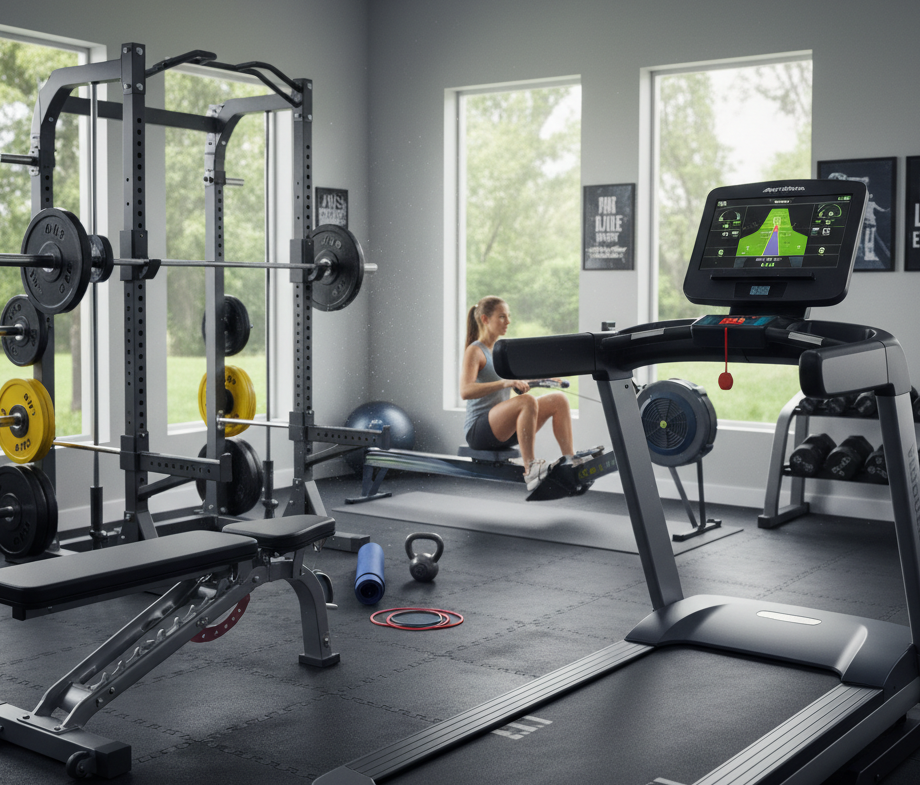In a world where health and wellness have moved from a trend to a fundamental pillar of a fulfilling life, investing in sports and fitness equipment has never been more relevant. Whether you’re a seasoned athlete or just beginning your journey to a healthier you, the right gear can make all the difference. This comprehensive guide will walk you through everything you need to know about purchasing sports and fitness equipment, ensuring your transaction is smooth, informed, and ultimately, a powerful step toward achieving your goals.
The Golden Rule: Know Your “Why”
Before you click “add to cart” on the latest high-tech gadget, pause and ask yourself: “Why am I buying this?” Is your goal to lose weight, build muscle, improve cardiovascular health, train for a specific event, or simply lead a more active lifestyle? Your answer will be the compass that guides your purchasing decisions. For instance, someone focused on strength training will prioritize a power rack and weights, while someone aiming for endurance might look at a high-quality treadmill or stationary bike. Knowing your “why” prevents impulse buys and ensures your investment aligns with your long-term fitness aspirations.
Budgeting for Success
Let’s be real: quality fitness equipment can be a significant investment. However, “expensive” doesn’t always equal “best,” and “cheap” can often mean low-quality. A balanced approach is key. Set a realistic budget and stick to it. Consider the equipment’s durability, warranty, and potential for future upgrades. A cheaper piece of equipment that breaks down after a few months will cost you more in the long run than a well-built, slightly more expensive one that lasts for years. Remember, your health is priceless, but your wallet has limits. Look for sales, used equipment from reputable sellers, or package deals to get the most bang for your buck.
The Arena of Options: A Breakdown of Popular Equipment Categories
The market is flooded with options, and it can be overwhelming. Here’s a breakdown of some of the most popular equipment categories to help you navigate:
1. Cardiovascular (Cardio) Equipment: This category includes treadmills, elliptical machines, stationary bikes, and rowing machines. These are excellent for heart health, weight loss, and endurance. When buying cardio equipment, consider the space you have available, noise level, and built-in features like heart rate monitors and pre-programmed workouts. A good treadmill should have a sturdy frame and a powerful motor, while a quality stationary bike should have a smooth, adjustable resistance system.
2. Strength Training Equipment: From free weights (dumbbells, barbells) and weight benches to power racks and multi-gyms, this equipment is essential for building muscle and increasing strength. For beginners, a set of adjustable dumbbells is a versatile and space-saving option. For those serious about lifting, a power rack is a game-changer, offering a safe and effective way to perform compound movements like squats and deadlifts. Look for durable materials, ergonomic design, and a high weight capacity.
3. Home Gym Essentials & Accessories: This is where the smaller, but equally important, items come in. Think resistance bands, yoga mats, kettlebells, foam rollers, and jump ropes. These items are often affordable and incredibly effective for a wide range of exercises. They are perfect for warm-ups, cool-downs, and supplementing your main workouts. A quality yoga mat, for example, can make floor exercises much more comfortable and stable.
The Online vs. In-Store Dilemma
Both online and physical stores have their pros and cons.
Online Shopping: The internet offers unparalleled convenience, a vast selection, and the ability to compare prices from a multitude of retailers. You can read user reviews, watch product demonstrations, and have the equipment delivered right to your door. The downside? You can’t physically test the equipment. You can’t feel the grip of a dumbbell or the sturdiness of a treadmill. You have to rely on descriptions and reviews.
In-Store Shopping: A physical store allows you to try before you buy. You can sit on a bike, run on a treadmill, and get a feel for the equipment’s quality and ergonomics. Sales associates can also provide expert advice. The drawbacks are often a more limited selection and potentially higher prices due to overhead costs.
The best approach is often a hybrid. Do your research online, read reviews, and then, if possible, visit a store to test the equipment in person before making your final decision.
Beyond the Price Tag: Key Factors to Consider
- Space: How much room do you have? Measure your workout area. Consider foldable or compact equipment if space is a premium.
- Warranty & Customer Service: A strong warranty signals the manufacturer’s confidence in their product. A good customer service team can be a lifesaver if you run into any issues.
- Assembly & Delivery: Some large pieces of equipment require complex assembly. Check if the retailer offers professional assembly or if you’ll be doing it yourself.
- User Reviews: Don’t underestimate the power of a good review. Real-world feedback from other users can provide invaluable insights into the product’s performance, durability, and any potential issues.
- Features & Technology: From Bluetooth connectivity to integrated workout apps, modern equipment comes with a host of features. Decide which features are “must-haves” and which are “nice-to-haves” to avoid paying for technology you’ll never use.
Your Fitness Journey Starts Now
Purchasing sports and fitness equipment is more than just a transaction; it’s an investment in your health and wellness , your energy, and your future self. By taking the time to understand your needs, set a budget, and research your options, you’ll be well on your way to building a home gym that empowers you to reach your goals. So, get ready to sweat, challenge yourself, and embark on a rewarding journey of personal growth and well-being. Your best self is waiting.






